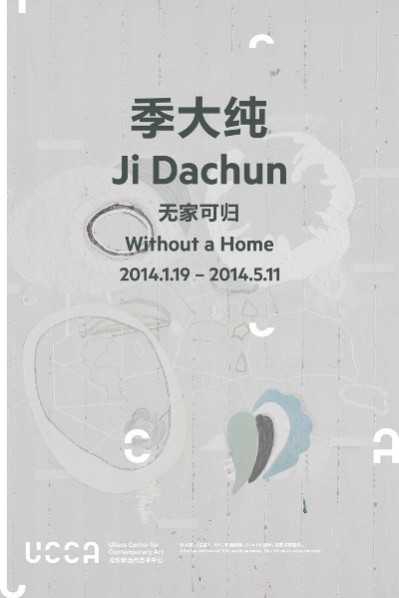
UCCA is proud to announce an exhibition of work by the painter Ji Dachun (b. 1968), best-known for his surrealist, satirical critiques of contemporary China. “Ji Dachun: Without a Home” spans several key moments in the artist’s prodigious career and includes a new suite of works made specifically for this exhibition. With some 40 works realized in the past decade, the show also marks the artist’s first institutional exhibition in Beijing and the most comprehensive look at Ji’s mature practice to date.
Ji Dachun’s work is often discussed in terms of an East-West dialectic in its appropriation of traditional Chinese painting forms and its ambivalent, postmodern attitude towards the construction of meaning. “Ji Dachun: Without a Home” seeks to engage an artist whose works’ manifold strangeness defies such simplistic classification, instead focusing on the evolution of the artist’s practice and artistic language over the past two decades.
Since he started showing in the mid-1990s, Ji’s painting has alternated between a wry figurative mode and an aesthetic characterized by abstract quasi-landscapes and still lifes. In his earlier works, Ji depicts historical figures, cartoonish animals, children’s toys, and everyday objects against stark white backgrounds. These familiar objects and figures are marked by bizarre visual non-sequiturs and juxtapositions, resulting in humorous, otherworldly scenes: cryptic caricatures, cartoonish perversity, and variously macabre, trenchant, and grotesque overtones. The animation cel-like images seem ineffably familiar yet inexorably estranged, resisting conventional interpretation.
Ji Dachun’s later practice engages more elaborate biological and cybernetic forms. These pieces often adopt the sparse directness of anatomical and botanical drawings. However, their grotesque bodily reconstructions hint at themes far more morbid and ominous, as in his iconic Rococo, in which bone and organ tissue are reconfigured into a baroque, acanthus-like array.
While Ji Dachun’s figurative works operate through the juxtaposition of disparate objects, the more recent abstract works employ contrasts of technique and texture. The artist’s largelymonotone compositions of organic shapes, jagged lines, and rigid geometric structures form a putative landscape both labyrinthine and balanced, disjointed yet unified. Preserving the general structure and composition of Chinese landscape painting while stripping it of its content and context, the result is an open-ended psycho-spiritual landscape powered by the juxtaposition of technical oppositions—linear and painterly, organic and geometric, color and pallor, flatness and texture, positive and negative space.
Viewed together, Ji Dachun’s idiosyncratic paintings reveal an artist with both an oblique sense of humor and a sharp penchant for self-criticism and social commentary. His aesthetic resists easy characterization, denying immediate understanding while demanding sustained contemplation. Ji stands out from Chinese contemporary artists whose practices are easilysubsumed within institutionalized or overtly politicized rhetoric, establishing him as one of the most unique Chinese artists working today.
About the Artist
Ji Dachun (b. 1968, Nantong) is a Beijing-based painter. He graduated from Department of Oil Painting of the Central Academy of Fine Arts in 1993. His work has been exhibited widely in China, Europe, and the U.S., with solo exhibitions at Macro Museum d’Arte Contemporanea Roma (2013); Shanghai Art Museum (2007); Kunstmuseum Bern (2007); and the Posco Art Museum, Seoul (2005). He has also been shown in major group exhibitions at the Museum Ludwig, Koblenz (2008); Musée Maillol, Paris (2008); Musée des Beaux-Arts Lausanne (2008); Salzburg Modern Art Museum (2007); Guangzhou Triennial (2002); Chengdu Biennale (2001); and Shanghai Biennale (2000).
About UCCA
The Ullens Center for Contemporary Art (UCCA) is an independent, not-for-profit art center serving a global Beijing public. Located at the heart of Beijing's 798 Art District, it was founded by the Belgian collectors Guy and Myriam Ullens and opened in November 2007. Through a diverse array of exhibitions with artists Chinese and international, established and emerging, as well as a wide range of public programs, UCCA aims to promote the continued development of the Chinese art scene, foster international exchange, and showcase the latest in art and culture to hundreds of thousands of visitors each year.
About the exhibition
Duration: January 19 through to May 11, 2014
Venue: The Ullens Center for Contemporary Art (UCCA)
For general information, call +86 10 5780 0200, email visitor@ucca.org.cn, or visit www.ucca.org.cn.




























